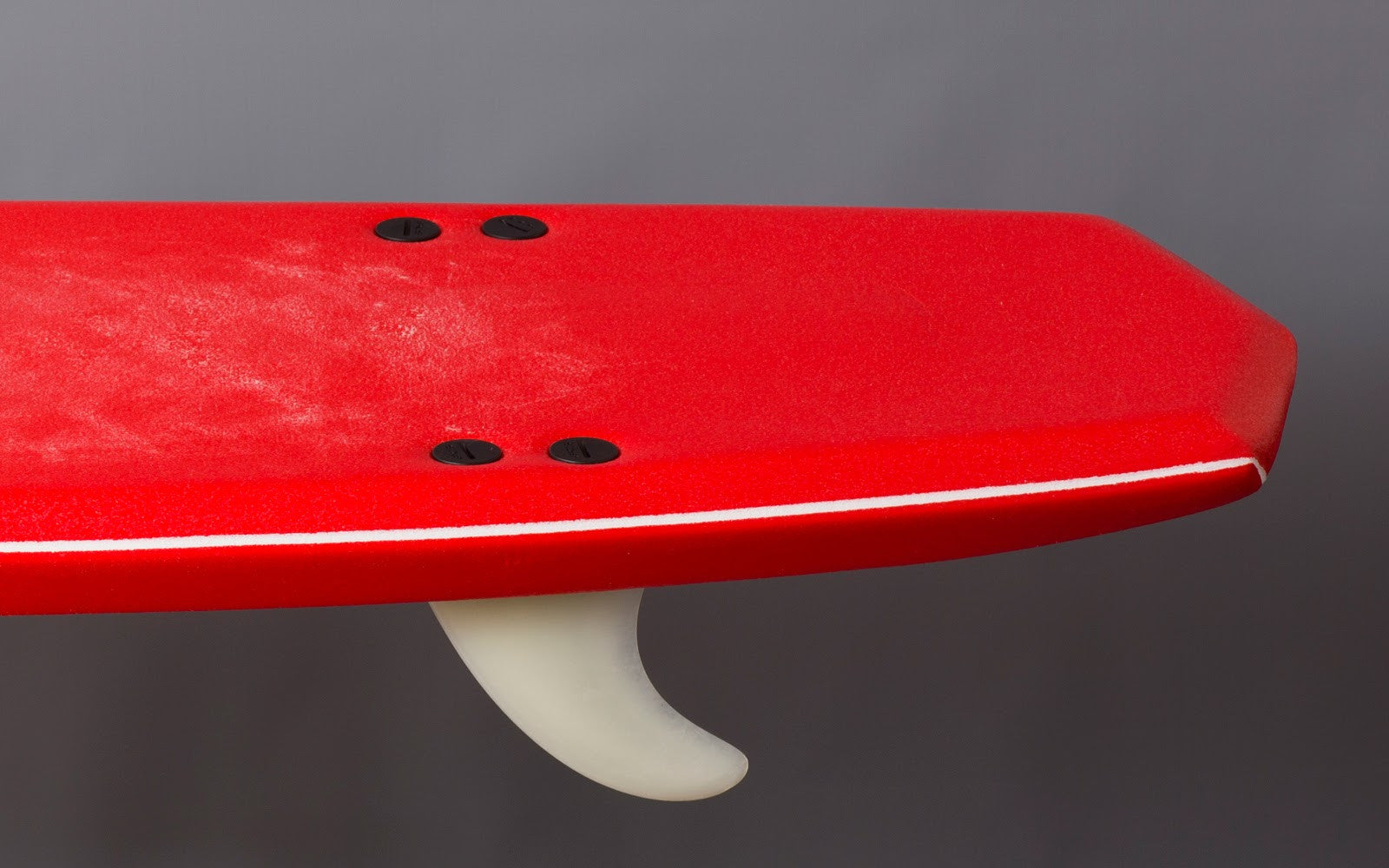Why soft construction? Because it rules!

An obvious aspect of surfboards made from Moda Core is that they're soft. Since hard fiberglass construction is the state-of-the-art in terms of performance, some have asked why Moda has chosen to use soft construction.
The short answer is that we think soft surfboard construction has the potential to outperform fiberglass construction because it enables flex for variable-rocker.
Soft materials are key to how Moda Core surfboards flex because they don't counter the flex behavior provided by our internal wood core. Since flex is entirely controlled by the internal core, the soft exterior just needs to hold the surfboard's shape and float.
We explored many different ideas and designs but simply couldn't get surfboards to flex properly using any conventional surfboard materials or construction. Either they didn't flex at all, didn't flex in the right way, weren’t controllable, or weren't consistent from board to board.
This is because traditional fiberglass surfboards are monocoque; a construction where the outer skin plays a key structural role by bearing most or all of the stress. Monocoque excels at rigidity; in other words, not flexing. Examples include eggs, aircraft fuselages, automobile chassis, and fiberglass surfboards.
Based on our experience, we think the best way to make surfboards flex is though soft surfboard construction; it's what makes flex possible. As a welcome benefit, soft construction means Moda surfboards not only have the performance advantages of variable-rocker, but also are much more user-friendly compared to conventional surfboard constructions. For me, this combination makes surfing more fun.
With the safety of soft construction, I surf more because I'm more likely to drop in on questionable waves that I'd otherwise pass up if I were on a hard surfboard. Soft offers subtle benefits such as I no longer suffer tender spots on my chest from paddling on a hard surfboard. And soft construction makes getting my board to and from the beach less of a chore since it doesn't have a fiberglass shell that dings from day to day movement. In short, soft construction simply makes surfboards easier to live with and more user-friendly than conventional fiberglass surfboards.
But what really excites me about soft construction is that, because it enables variable-rocker, it has the potential to advance surfing performance beyond the capabilities of traditional fiberglass boards.
Consider that conventional surfboard materials, PU and EPS foam and fiberglass, do the exact same things today as they did when introduced to surfing in 1956. Yet, the way people surf has evolved dramatically.
Within bodyboard construction, there are a wide variety of materials that all perform very differently in different conditions and for different surf styles. For example, some foams are lighter in weight, some flex better in colder temperatures, and some favor drop knee riders. And new bodyboard materials are still being deployed, like blended foams.
Many materials mean many configurations that feel and perform very differently, and I look forward to exploring them in the future with Moda so we can make surfboards even more fun.
Soft surfboards aren’t a fad, they’re the future of surfing.
As usual, questions and comments are gladly fielded at @modasurfboards on Twitter and Instagram!
Leave a comment
Comments will be approved before showing up.



